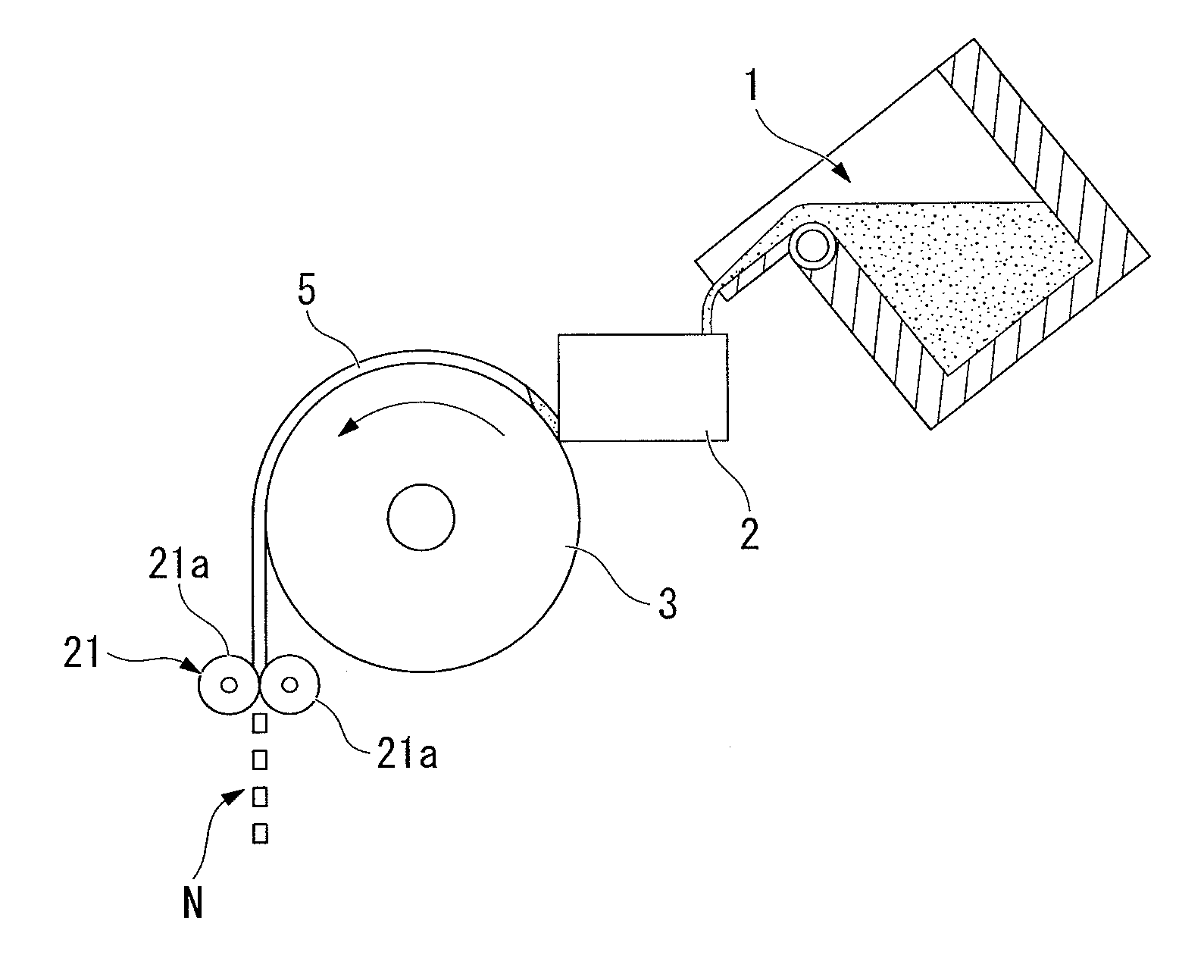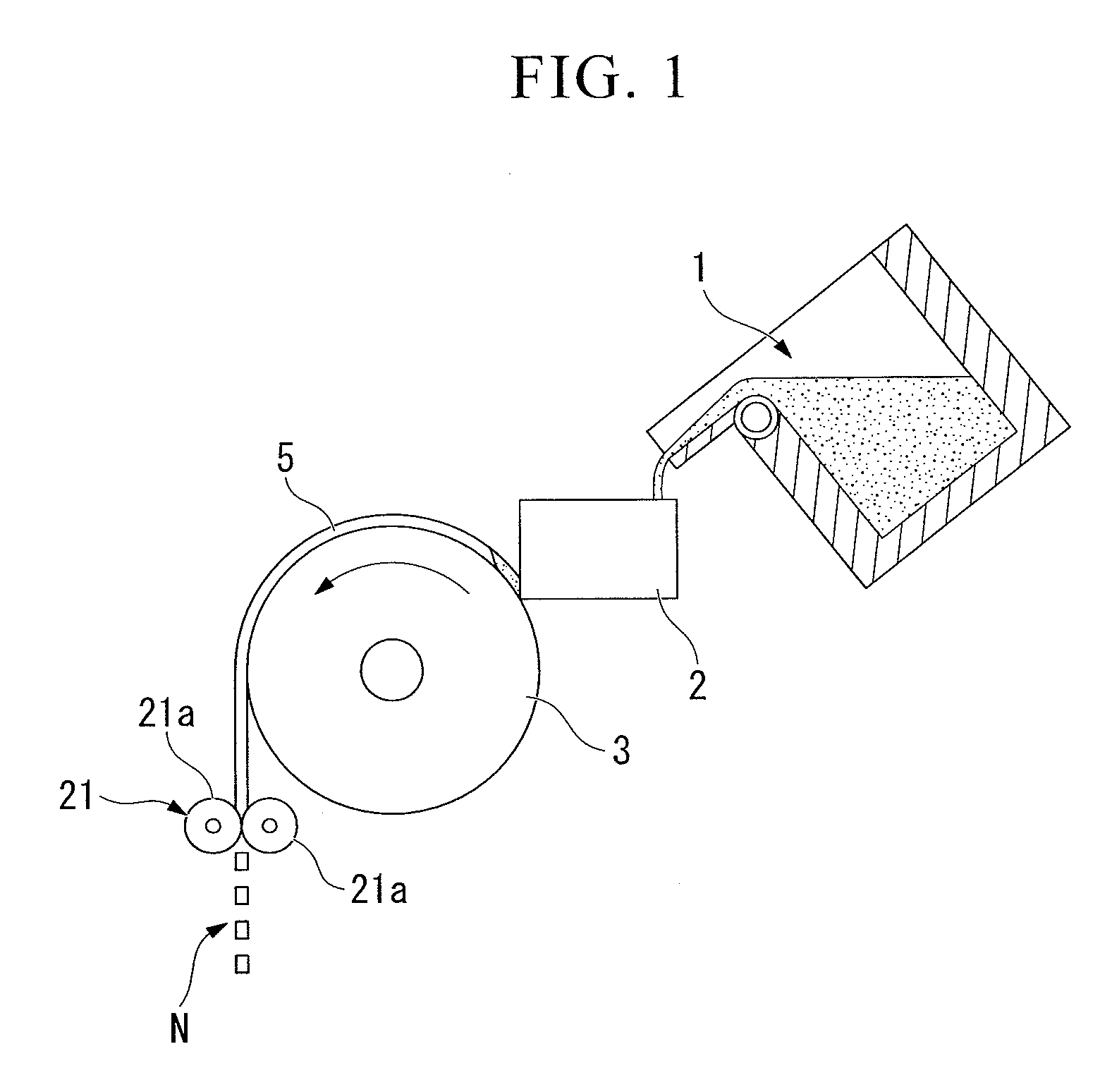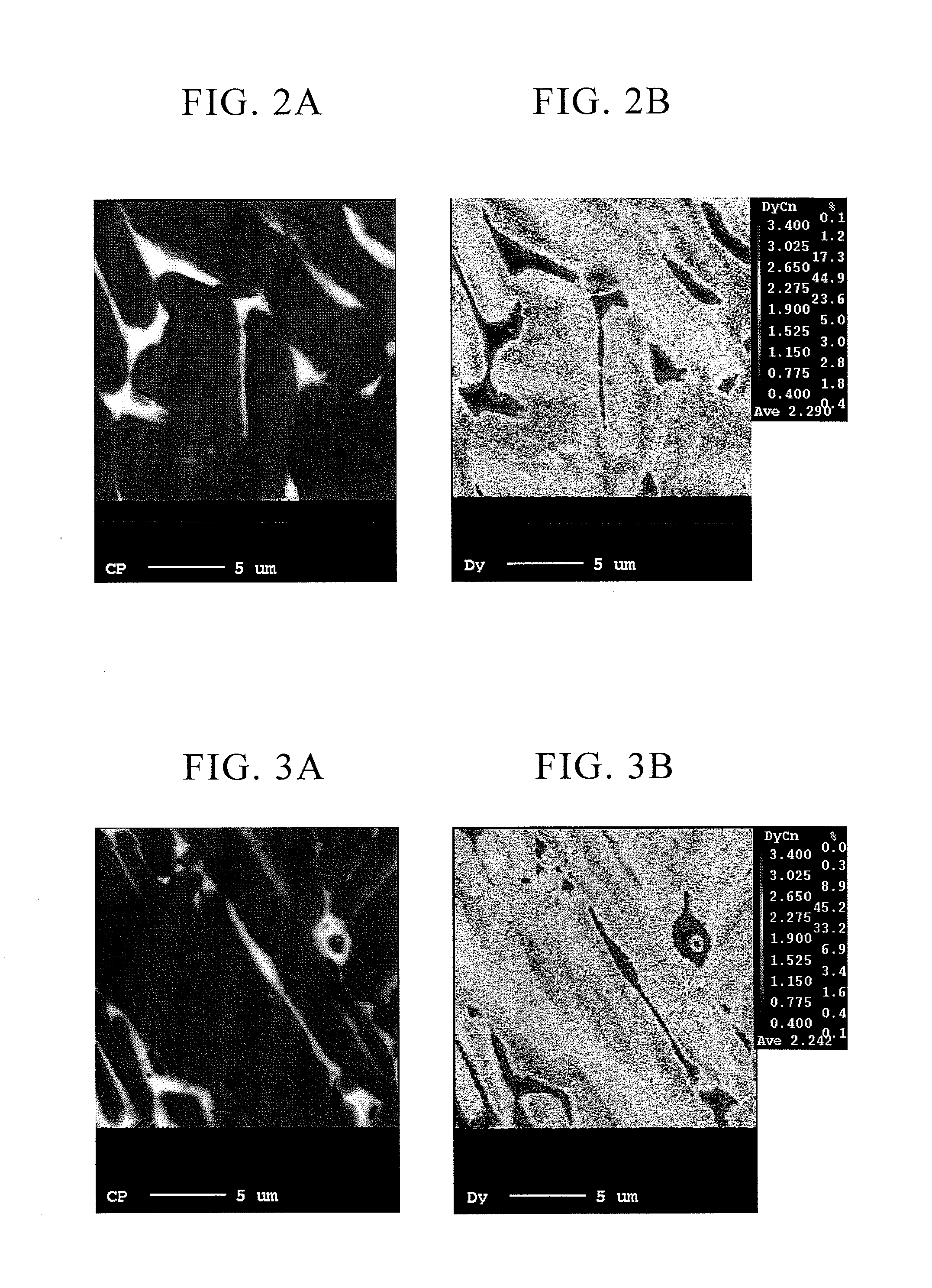R-t-b alloy, process for production of r-t-b alloy, fine powder for r-t-b rare earth permanent magnets, and r-t-b rare earth permanent magnet
- Summary
- Abstract
- Description
- Claims
- Application Information
AI Technical Summary
Benefits of technology
Problems solved by technology
Method used
Image
Examples
example 1
[0106]A raw material with a composition of Nd: 25%, Pr: 6%, Dy: 2%, B: 0.99%, Co: 1.0%, Al: 0.15%, Cu: 0.1.0%, Ga: 0.1%, and the remainder being Fe, as weight ratios, was weighed, poured into the refractory crucible 1 in the manufacturing apparatus shown in FIG. 1, which was made from alumina, and melted in an atmosphere of argon gas at 1 atmospheric pressure using a high frequency melting furnace to form a molten metal alloy. Next, the molten metal alloy was supplied to the casting roller 3 (cooling roller) via the tundish 2, cast using an SC method, and was crushed using the crushing equipment 21 in order to form cast alloy flakes of the R-T-B alloy. Then it was transferred to the temperature maintaining container of the temperature control apparatus to start the temperature maintaining heat treatment step.
[0107]The rotating speed of the casting roller was 1.0 m / s, the temperature of the alloy when it detached from the cooling roller was 800° C., the temperature of the alloy when ...
example 2
[0128]Except for using a raw material with a composition of Nd: 22%, Pr: 6%, Dy: 5%, B: 0.99%, Co: 1.0%, Al: 0.15%, Cu: 0.10%, Ga: 0.1%, and the remainder being Fe, as weight ratios, casting and crushing were performed similarly to example 1, and a temperature maintaining heat treatment step was performed similarly to example 1 to obtain cast alloy flakes of R-T-B alloy.
example 3
[0134]Except for using a raw material with a composition of Nd: 17%, Pr: 5%, Dy: 9%, B: 0.92%, Co: 2.0%, Al: 0.15%, Cu: 0.10%, Ga: 0.1%, and the remainder being Fe, as weight ratios, casting and crushing were performed similarly to example 1, and a temperature maintaining heat treatment step was performed similarly to example 1 to obtain cast alloy flakes of R-T-B alloy.
PUM
| Property | Measurement | Unit |
|---|---|---|
| Temperature | aaaaa | aaaaa |
| Temperature | aaaaa | aaaaa |
| Temperature | aaaaa | aaaaa |
Abstract
Description
Claims
Application Information
 Login to View More
Login to View More - R&D
- Intellectual Property
- Life Sciences
- Materials
- Tech Scout
- Unparalleled Data Quality
- Higher Quality Content
- 60% Fewer Hallucinations
Browse by: Latest US Patents, China's latest patents, Technical Efficacy Thesaurus, Application Domain, Technology Topic, Popular Technical Reports.
© 2025 PatSnap. All rights reserved.Legal|Privacy policy|Modern Slavery Act Transparency Statement|Sitemap|About US| Contact US: help@patsnap.com



